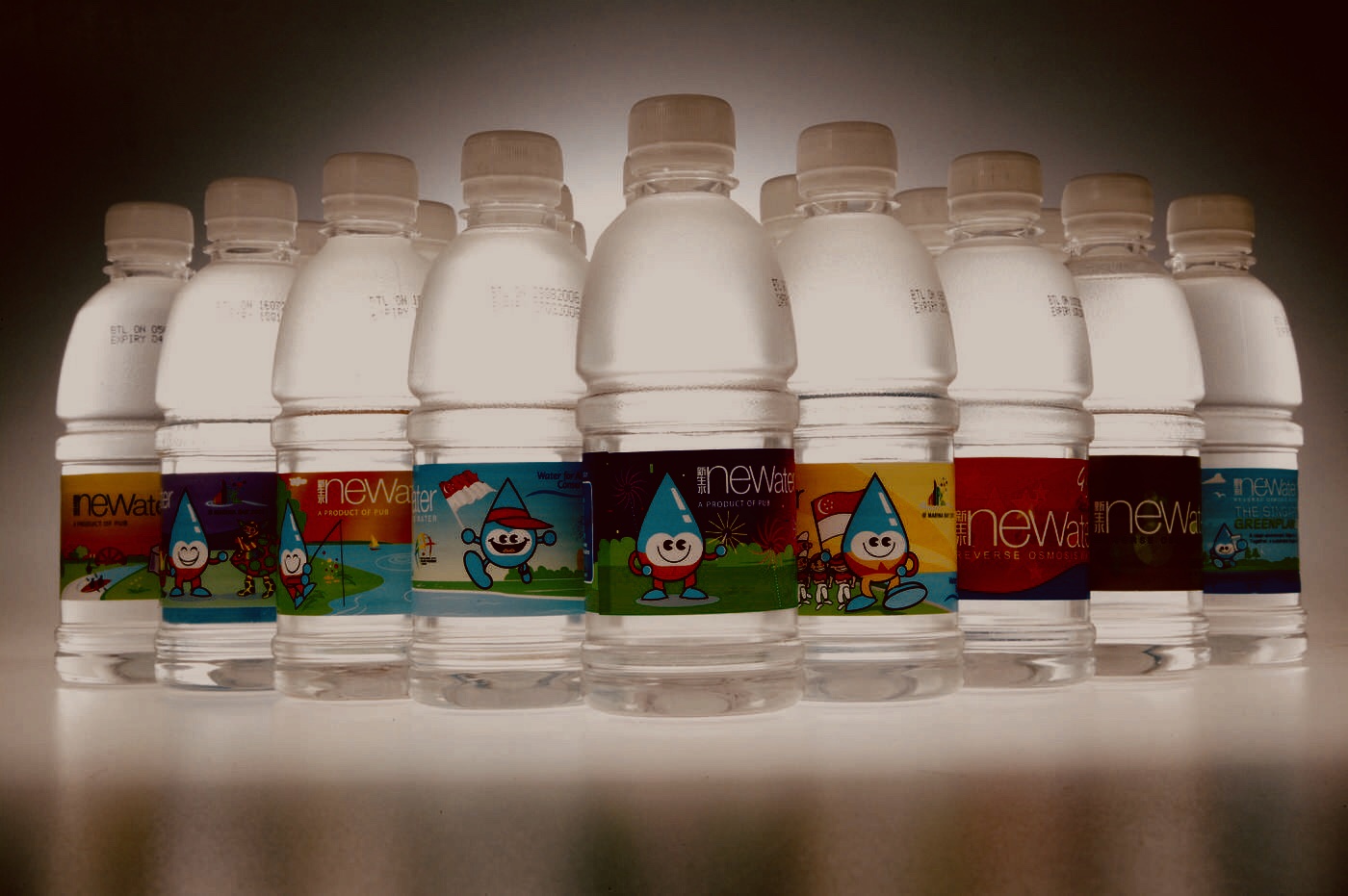The chemicals are:
1) Dicofol, a pesticide related to DDT, and
2) Pentadecafluorooctanoic acid (PFOA), its salts, and PFOA-related compounds
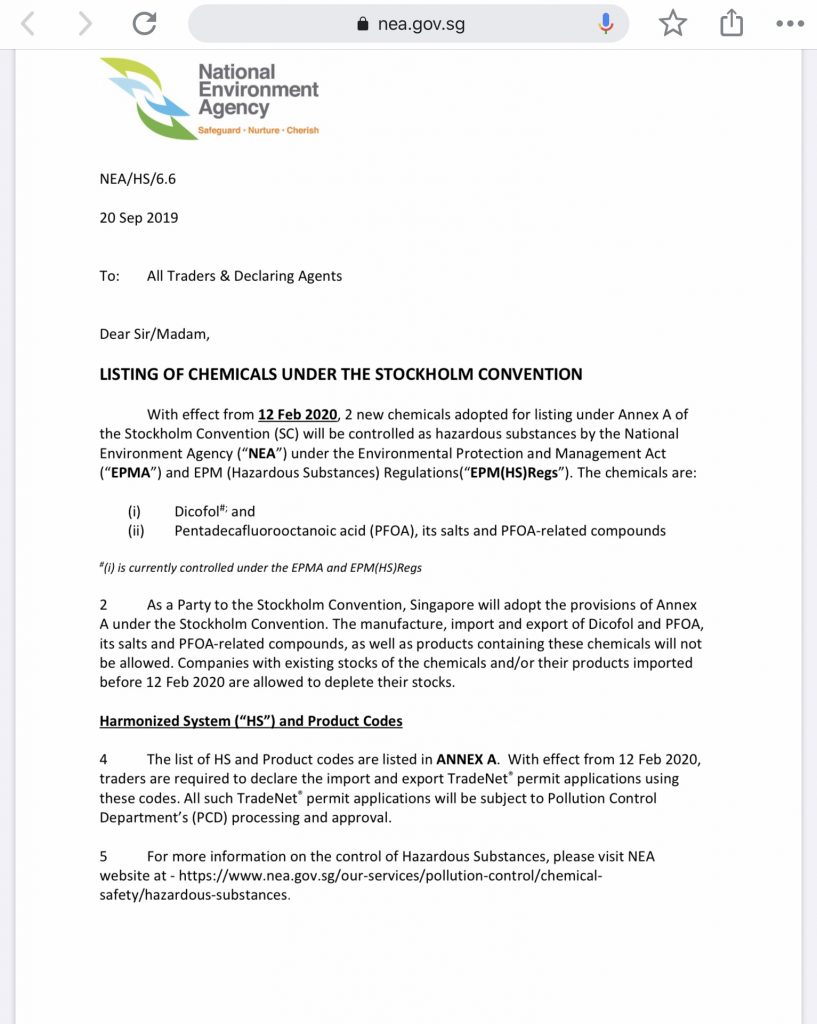 The letter, from NEA, sent to Traders and Declaring Agents on September 2019 announcing Dicofol and PFOA as hazardous substances. (Image credit: NEA)
The letter, from NEA, sent to Traders and Declaring Agents on September 2019 announcing Dicofol and PFOA as hazardous substances. (Image credit: NEA)
In the letter, companies with existing stocks of the chemicals and/or their products imported before 12 February 2020 are required to deplete their stocks (that’s basically a 5-month notice). How and what environmentally-safe manner these “stocks” will be depleted will be something for NEA to enforce and share with the public eventually.
Naturally, the next question you’d ask is—how is this related to our drinking water? In Singapore, I sometimes drink direct from my taps, knowing my drinking water is safe. Some of us use filters, while others boil their tap water (also known as potable water) before drinking. A rare few only drink from bottled mineral water.
To understand how the hazardous chemical PFOA is somehow linked to our drinking water, I need to first take you back—way back by about 70 years. If you want to save time, you can watch the Focus Features’ film Dark Waters (which showed in Singapore from 2 January to 12 February 2020). Coincidence much? Scarily.
While the movie itself is slow and has lots of dialogue (Mark Ruffalo stars as a grumpy ‘Hulk-smash’ lawyer), it is based on a true story. And here’s the truth: DuPont, founded in 1802 and at one time, the world’s largest chemical company in sales, was dumping a toxic chemical called PFOA into the air, in landfills, in rivers, and tossing drum-loads of them into the sea—since the 1950s.
Years later, residents near DuPont plants, who drank PFOA-contaminated drinking water were getting kidney cancer, testicular cancer, thyroid disease, high cholesterol, and so forth.
Have I gotten your attention yet?

But what on earth is PFOA? Why is NEA banning this substance only now? Why should you care if the PFOA contamination happened only in the US? And how is this related to our drinking water?
Many of the answers hit much closer to home (and inside you and your loved ones) more than you think.
Remember non-stick pans? The Teflon kind? Basically, if you toss a bunch of eggs at it, they wouldn’t stick to the surface? I’m sure you’d remember if your parents used it to cook and were amazed by how easy it was to wash, clean and dry them. No more grease, grime and gunk. Some non-stick pans you see in stores today advertised themselves as non-PFOA pans. There’s a reason for that.
In the 1950s, non-stick pans were made with Teflon, a material that though safe to use, required the help of a toxic, indestructible chemical known as PFOA, or perfluorooctanoic acid. That’s quite a mouthful, but in short, it’s called C8, which basically means 8 carbon atoms bonded in an unbreakable chain.
Once PFOA enters our bloodstream, it stays there forever, hence the term, ‘forever chemicals’. And based on this research, it passes on to our kids. It’s even been found in dolphins and polar bears.
Today, more than 99% of Americans have C8 in their bloodstream. Communities living close to any production plant where C8 was once used and disposed are exposed, such as the Netherlands, or Australia’s Williamtown. After it was found out and several class action lawsuits later, DuPont replaced C8 with GenX in 2009. It spun off a new company called Chemours to handle GenX, and despite its fancier name and Chemours’ assurances, GenX is still a concern.
So back to our drinking water question.
Between 5 March and 26 March 2019, NEA did a public consultation and shared its findings online. Short of a Singapore Water Week private discussion in 2018, there hasn’t been much local coverage on how terrible this man-made substance is until Dark Waters came along. As a Singaporean who’s finding out about this hazardous chemical only now, I’m flummoxed.
One question I immediately have is whether health screenings include blood tests for PFOA (or its family of PFAS-type substances, like PFOS for instance, which is used in cleaning products). If health screenings do not cover these chemicals, why? Can I go to a public health institution and ask for a PFOA or PFOS trace level in my blood? In my kid’s blood?
Unfortunately, getting PFAS-tested is a complicated process. I began to wonder if anyone did research on PFOA or PFOS on Singapore’s water systems or our bloodstream over the years. I’m curious to know if anyone did research correlating possible high levels of PFOA and PFOS in our bloodstreams with links to higher probability of contracting cancer-linked diseases. The usual comment I get is cancer is genetically linked to my family history, diet, lifestyle habits and/or stress levels. I think we can do more in terms of research.
In the US, the health advisory for drinking water is 0.2 micrograms per litre for PFOS and 0.4 for PFOA. In Australia’s New South Wales district, the advisory is 0.07 for PFOS and 0.56 for PFOA. Singapore’s drinking water site report from June 2019 does not have an advisory on PFAS levels, but there is a line on Dicofol, which the NEA has already said is a hazardous substance, so it’s due for an update. Naturally, I’d wonder if PUB will put up a similar advisory soon.
In Singapore, the water we drink comes from four different sources: water from local catchments (reservoirs), imported water from Johor, NEWater (recycled from wastewater) and desalinated water (from the sea). While currently, there’s no indication in the PUB drinking water site report of any levels of PFOA or PFOS, our rivers, seas and surface water do.
Since 2007, several students and researchers have published research/dissertation papers on this. The first three papers we found chronicle the concentrations of PFOA and PFOS in our rivers, wastewater plant discharges, seas and reservoirs in Singapore and around us (eg. Johor).
The fourth research paper, however, looks into PFOA and PFOS levels in the Singaporean male and female bloodstream and the food we eat. All research papers were done by four different groups of researchers and students, but they do reflect the changing concentrations through the years based on when the papers were published. Bear with me as it gets a little research-heavy here.
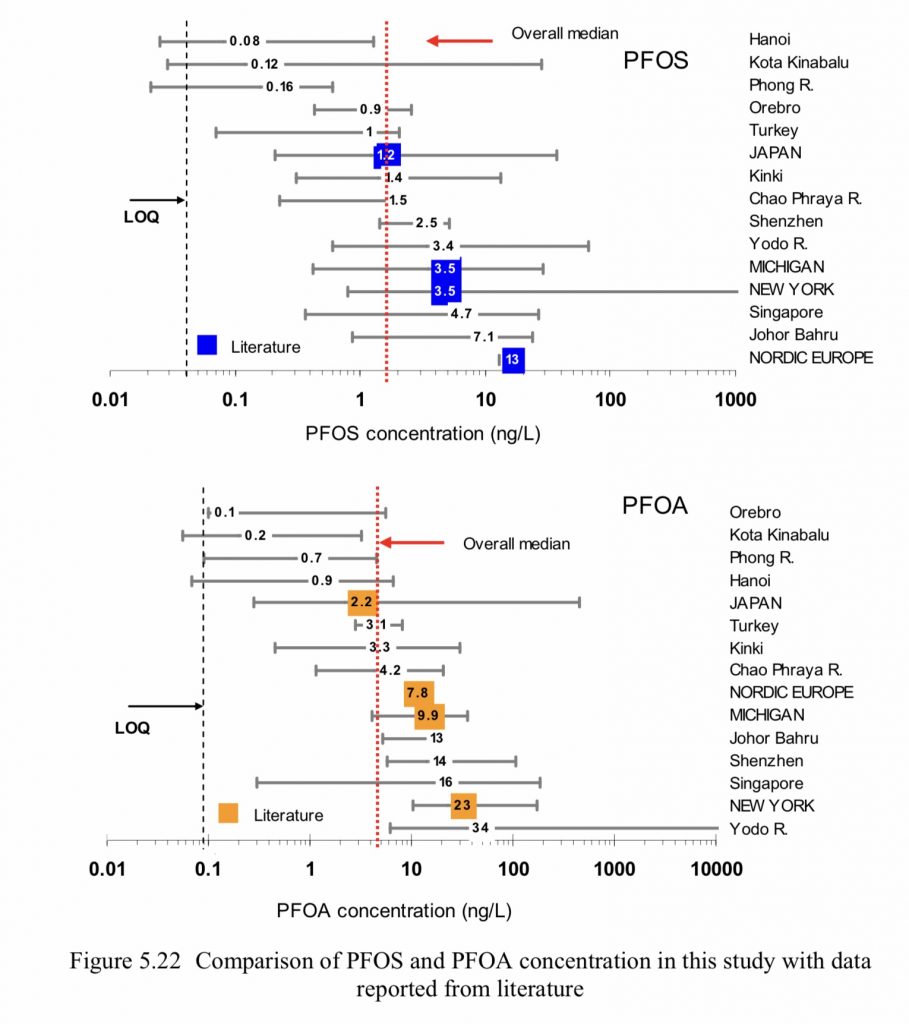
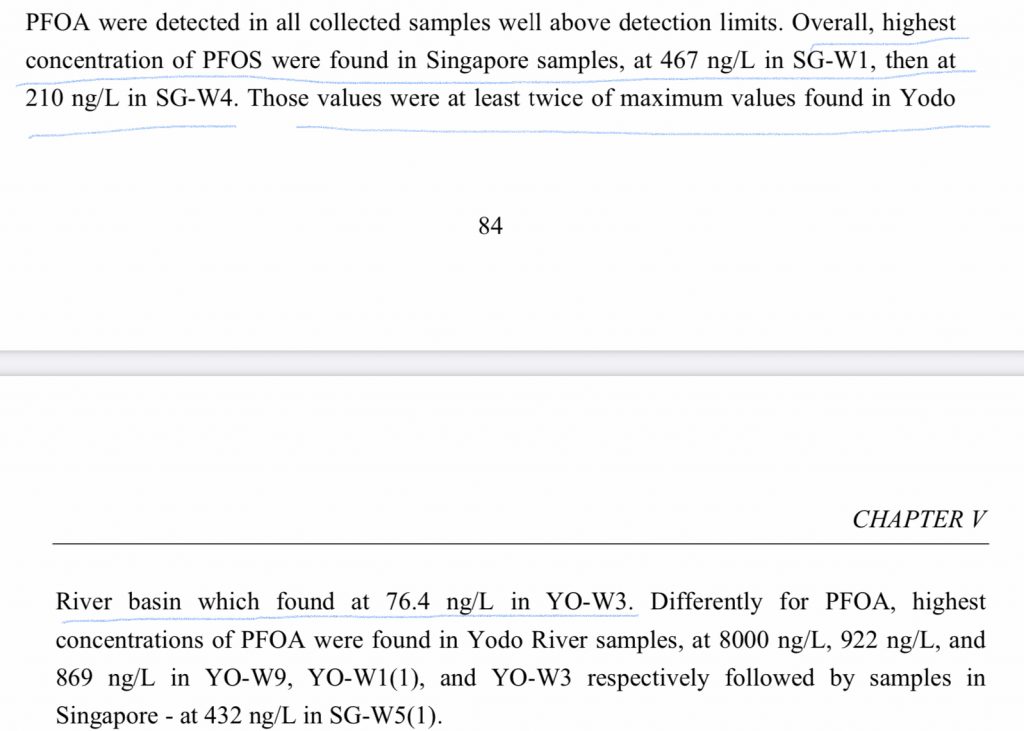



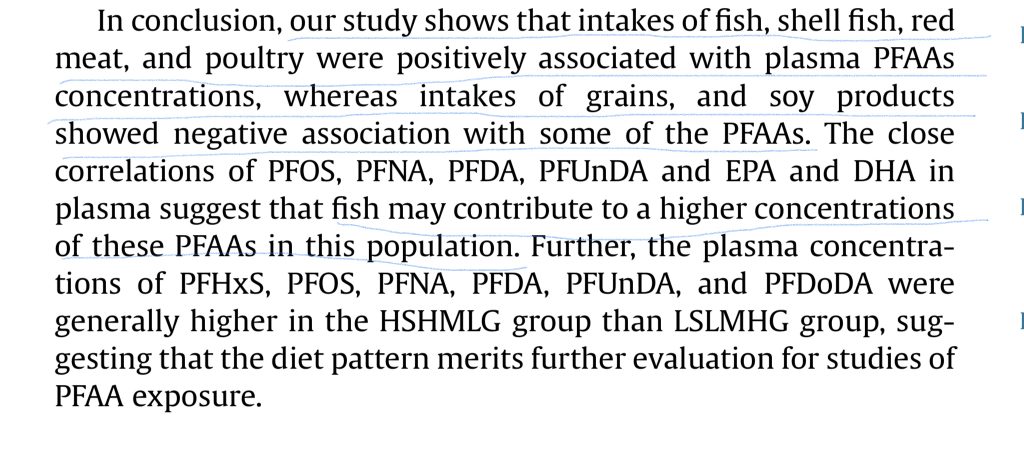
According to the US EPA, PFAS levels in drinking water can be removed through a few methods in water treatment plants. Activated carbon treatment, ion exchange treatment and high-pressure membranes like nanofiltration or reverse osmosis are effective in removing these levels from drinking water.
A check on PUB’s water treatment and water quality process reveals some of these methods (carbon membranes, nanofiltration, reverse osmosis) being deployed to filter out unwanted components from water sources. It is at least reassuring to know our drinking water processes have recommended methods in place that can remove these chemicals.
Naturally, the follow-up question I would have is where does the post-processed sludge waste, filled with PFOA, PFOS and other PFAS-type substances, dumped or “depleted”? My guess is they are incinerated or landfilled.

(PUB’s water treatment and water quality monitoring process includes nanofiltration, carbon membranes and reverse osmosis. These methods are known to be effective safeguards against PFOA and other PFAS-type substances from accumulating in our drinking water. Image credit: PUB)
Anyway, now that we know PFOA, PFOS and all other PFAS-type substances are here to stay, perhaps I should ask this next question: why did it take so bloody long for us to ban these chemicals? I mean 3M and DuPont have had in-house studies and evidence of the hazards since the 1950s. This multi-decade gap between the time when these companies create a new form of chemical, and when the chemical is deemed hazardous enough to be banned does not sit well with me.
NEA’s move was triggered only after the Stockholm Convention on Persistent Organic Pollutants listed Dicofol and PFOA as hazardous in 2019—in PFOA’s case, that’s a near-70 year gap befitting of an entire generation. This means we are beholden at some level to chemical companies, especially if they self-regulate new chemicals they produce and do not declare them to world standards and gatekeepers.
The spotlight was recently thrown on China when a study in Shanghai found 110 mothers with their breast milk contaminated with high levels of fluorinated chemicals. Another study found residents in Fuxin, Liaoning province, having higher traces of PFOA blood concentrations due to their proximity to fluorochemical production plants. As recently as 2017, China was the world’s largest emitter of PFOA, and the only remaining producer of PFOS.
But between the US and China, there has been some relief. After PFOA was phased out in 2000, a PFOA Stewardship Program was formed to eliminate factory emissions and product content by 2010 and completely by 2015. PFOA blood levels declined between 1999 and 2014 while the World Bank approved a US$24m grant to support China’s reduction efforts.
Meanwhile, what can I do about the levels of PFOA and PFOS in my blood? Short of getting tested to see if I’m above or below the median, I’ve been warned to stay away from greasy or oily packaged fast foods. These wrappers usually contain grease-repellent coatings. Steer clear of stain-resistance treatments as much as I can, especially those advertised for carpets and furniture. Watch out for products made with Teflon or containing ingredients like fluoro or perfluoro. If I am using non-stick cookware, do not let it heat above 300 degrees Centigrade.
The thing about all this is really the fact that man-made cancer-linked chemicals have been dumped into our bodies and our environment since the 1950s. Despite the back-breaking advances in technology and conveniences our forefathers have bequeathed upon us, their sins for being industrious aren’t equally small. The next chapter then is whether we can accept the past, re-educate the young, and live with the consequences for the rest of our lives.
Last August 2019, Singapore’s Prime Minister Lee Hsien Loong said this in his National Rally Speech: “Climate change may seem abstract and distant for many of us, but it is one of the gravest challenges facing humankind.”
While rising temperatures and sea levels are now topics the media is covering extensively as a long-term threat to our small, vulnerable island-nation, let’s not forget the unseen threat already lurking in our bloodstream, caused by indestructible man-made pollutants we’ve been unknowingly ingesting and consuming.
On hindsight, Greta Thunberg should have shouted “How dare you?” in the boardrooms of these chemical companies instead. That would put a better spotlight on the issue already inside all of us.
Do you, like us, also want to know how we can get PFOA and PFOS-tested? Tell us what you think at community@ricemedia.co.

